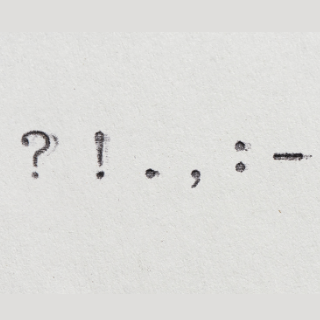
This language lesson is designed for children aged 6 to 12 years to guide them through different end punctuation and how to use correct punctuation at the end of sentences.
In our previous video lesson, we learned the capitalization rules when writing sentences. In this video lesson, we will learn how to use the correct end marks.
What is End Punctuation?
End punctuation is the punctuation marks used at the conclusion of a sentence. It is also known as end marks. It helps the child how to interpret each sentence.
What are the Different End Punctuation Marks?
The video lesson introduces the child to three different ways to end a sentence. This lesson teaches them when to use a period, a question mark, or an exclamation mark as an ending to a sentence.
-
Periods
Periods are used to end complete sentences (simple sentences that include a subject and a verb). It is represented by a dot symbol “.”. It is the most common end-of-sentence punctuation.
For example,
-
- Martin went fishing.
- Jenny ate pizza.
- The dog played with a ball.
Here, each sentence is ending with a period end mark.
Periods are also used to end indirect questions (reporting questions rather than asking them). And thus, expressed as statements.
For example,
-
- Martha asked the teacher if she could go to the bathroom.
- I wonder if it is true.
In the above examples, the question is asked indirectly, and thus they act as a statement.
-
Question Marks
Question marks are used at the end of a direct question, or a statement of surprise or disbelief. It is represented by the symbol “?”.
For example,
-
- Who ate my pizza?
- Could you tell me where the library is?
- When does the next bus arrive?
Here, all the above questions are ending with the question end mark.
-
Exclamation Marks
An exclamation mark is used to show surprise, excitement, strong emotion, or sharp command. It is represented by the “!” symbol.
For example,
-
- What a lovely view!
- Alas, we lost the game.
- What a waste of time!
All the above sentences end with an exclamation end mark.
What are End Punctuation Rules?
There are three end punctuation rules
- Use a period at the end of a statement, command, or request.
- Use a question mark at the end of a question.
- Use an exclamation point at the end of a sentence that expresses emotions.
How to Avoid Additional End Punctuation Errors?
It is quite common to make punctuation mistakes while writing sentences, therefore, one must adhere to the following rules:
- When using a passive voice or a quotation, a comma or period should not directly follow a question mark or exclamation point that ends a quotation.
For example,
-
- Wrong end-of-sentence punctuation: “Why are you still awake?,” Mother asked.
- Correct end-of-sentence punctuation: “Why are you still awake?” Mother asked.
Here, the comma after the question mark is not required, as the commas and periods are always placed inside the closing quotation mark.
- Punctuation is never placed inside the opening quotation mark.
For example,
-
- Anna asked, “Why do you like football so much?”
- “I enjoy watching birds,” Martha said.
- The question mark or exclamation point should be placed outside quotation marks if it is not directly part of the quote.
For example,
-
- Have you read “Goldilocks and the three bears”?
Repeat this activity by writing a few sentences with missing punctuation marks. Ask the child to insert the correct punctuation marks at the end of each sentence as shown in the video.
Related Videos
- Capitalization at the Beginning of the Sentence
- Punctuation in a Friendly Letter
- How to Write Correct Addresses and Dates?
To watch more language video resources, click here.
Video Created by: Justine McNeilly
Tags
- elementary level
- english language
- grammar
- language development





